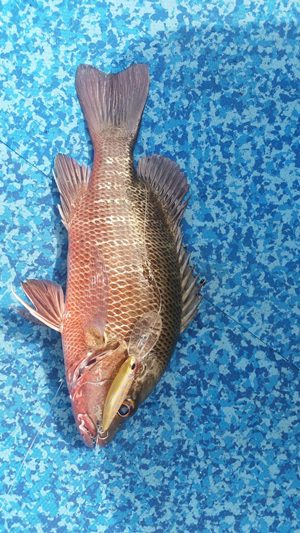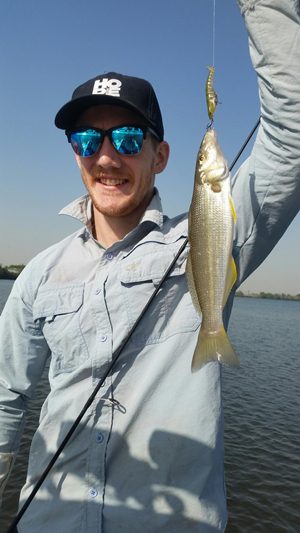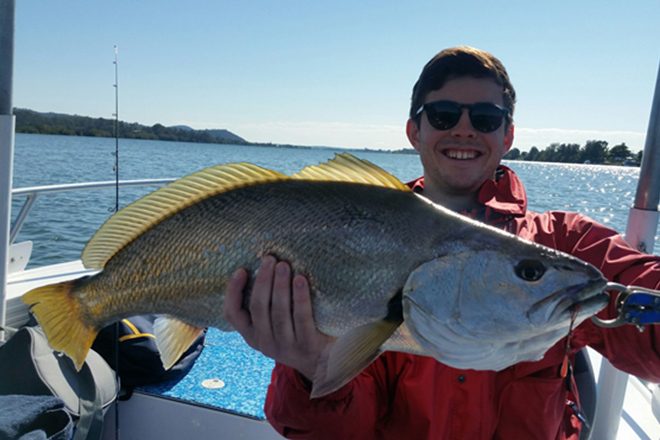

IN this month’s article I hope to give you a few tips on what species to target and the best techniques to target them with. I call October a transitional month, because several winter species start to slow down and local species that relish warmer conditions start to fire.
Whiting thrive from spring through to summer, particularly during the weeks leading up to a new and full moon. Whiting congregate throughout these lunar cycles to spawn and are usually active and hungry in this time. This species can’t resist a well-presented live worm or yabby, but I prefer to target them with lures.
Trolling small minnow style lures around 50mm long or less is a great technique for whiting, and as long as your lures are continuously hitting the bottom when you troll, you’re in with a good chance. I believe the sand, mud and shell grit that puffs up when the lure hits the bottom to be the big attraction because it looks like a small fish, yabby or prawn foraging.Jewfish Broadwater
The best locations I’ve found when trolling for whiting are in the mid to upper reaches of rivers, where the water is discoloured. After trolling a few whiting, I mix it up a little and cast small metal vibes for them, with any vibe around 40mm and less a good option. I prefer to drift when fishing with vibes and use a very small flick of the rod tip at a rate of around three hops per metre.
One of the fastest-growing activities over the past few years has been targeting whiting on surface lures, and spring is the perfect time to do it. Shallow flats that have a mixture of seagrass and yabby holes are the best areas to fish. Keep an eye out for any bird and surface activity while fishing the flats for whiting, because tea-leaf trevally choose to roam the shallows through to summer and will readily take your surface lure if you cast in range of them.Jewfish Broadwater
Mangrove jack are another species on offer as water temperature begins to rise. This much-coveted fish thrives on ambushing any baitfish that comes into range of the heavily structured areas they live in. Rock walls, bridge pylons, rock bars and old trees that have fallen into the water are the types of location to target jack. As with most species, jack seem to really spike in their feeding activity around tide changes.Jewfish Broadwater
If you plan your attack on a tide change during very early morning, late afternoon and night, your chances of success definitely increase. Jack are not fussy about what they attack – whether live or cut bait, trolled or cast lures – as long as your presentation is as tight into the structure as possible. During October and November, I have always had great success with one of the biggest predators in our rivers – the mighty mulloway, or jewfish as they are often called.Jewfish Broadwater
This species prefer the deepest holes in our rivers and thrive on feeding around tide changes. The deep holes that hold big schools of baitfish are the ones to target this apex predator, so having a good sounder, and knowing how to read it is a definite advantage. Jewfish go for a well-presented live bait and herring or poddy mullet are favourites, but as always lures are the way to go for me.Jewfish Broadwater
Soft plastics and metal or soft vibes worked along the bottom in deep holes are irresistible to jew. Jewies give a dogged fight, which makes them an addictive target.
Thanks everyone – I look forward to talking to you next month.
 Bush ‘n Beach Fishing Magazine Location reports & tips for fishing, boating, camping, kayaking, 4WDing in Queensland and Northern NSW
Bush ‘n Beach Fishing Magazine Location reports & tips for fishing, boating, camping, kayaking, 4WDing in Queensland and Northern NSW









